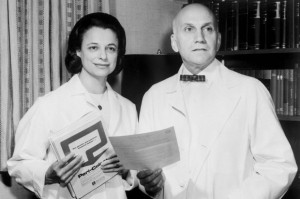Ron Belgau: Honesty about “Orientation Change”
I’m reblogging this from the Spiritual Friendship site. Concerning this site: “Spiritual Friendship was created by Ron Belgau and Wesley Hill out of frustration with the prevailing narratives about homosexuality in orthodox Christian circles, which focused either on political issues, or on reparative therapy in one form or another. Neither of these approaches, we believe, represents an adequate pastoral response to LGBT Christians.”
The author, Ron Belgau, is completing a PhD in Philosophy, and teaches medical ethics, philosophy of the human person, ethics, and philosophy of religion.
Here Ron writes about the need for the Church to be honest and truthful about the prospects of (what we generally call) sexual orientation change — they are not good. He says: “Young Christians struggling with same-sex attraction deserve to receive honest answers to their questions from Christian leaders.” And: “Young Christians in their late teens or early twenties who realize they’re attracted to their own sex face a difficult and often lonely process of discerning God’s calling. It’s important that we communicate honestly with them.”
Only the truth can set anyone free.
When I was twenty-one, I talked with a pastor about my sexuality for the first time. It was the pastor of my parents’ Southern Baptist Church, and in the course of our conversation, he told me about a man in the church who had been gay, but now was married and had children. He presented this as what I could hope for if I, too, pursued marriage.
However, I happened to know his wife’s side of the story. They had been married eleven years. During that entire time, he had been addicted to gay porn, and was regularly unfaithful to her on business trips. All this was going on during the height of the AIDS epidemic, before any effective treatments had been discovered. After years of forgiving repeated—and potentially deadly—infidelities, she was seeking a divorce. The pastor knew of this, because he insisted that as a Christian wife, it was her duty to keep forgiving her husband, and “not to deprive him” of his “conjugal rights”—despite the potentially deadly consequences.
In other words, a Christian pastor, who knew that this man had been cheating on his wife on a regular basis for over a decade, lied to my face and presented this man’s life as a success story, with the specific goal of encouraging me to pursue a similar path.
I thought of this experience last fall, when I heard a presentation by the leader of a prominent ex-gay ministry,* speaking to a group of undergraduates. While many things could be said about that presentation, I want to focus on only one: the speaker claimed — citing statistics from Masters and Johnson — that therapy aimed at changing sexual orientation had a 65% “success rate.”
I want to make several points.
First, anyone who has read very many studies about human sexuality will know that it is difficult to get reliable data. Different studies often report quite different results. Scientific studies of human sexuality are thus very different from, for example, scientific measurements of the distance from the earth to the sun. Using a variety of different methodologies, astronomers provide very precise and consistent measurements of this distance. On the other hand, when we are dealing with sexuality, the numbers vary significantly from study to study. This does not mean that the numbers are useless. But you have to approach the results with a lot more caution.
With that in mind, it’s worth comparing Masters and Johnson’s findings with the much more recent and more comprehensive study by Stanton Jones of Wheaton College and Mark Yarhouse of Regent University. Jones and Yarhouse’s reported “success rate” was dramatically lower—just over a third of that reported by Masters and Johnson.
In 2009 Jones and Yarhouse presented the final results of their 10-year study, “Ex Gays? An Extended Longitudinal Study of Attempted Religiously Mediated Change in Sexual Orientation” [pdf] at the American Psychological Association’s annual conference. In their study, based on long-term follow-up with participants in Exodus ministries, they found that 23% of the participants claimed to have experienced “substantial reductions in homosexual attraction and substantial conversion to heterosexual attraction and functioning” (p. 7). Jones and Yarhouse note, however, that
while we found that part of our research population experienced success to the degree that it might be called (as we have here) “conversion,” our evidence does not indicate that these changes are categorical, resulting in uncomplicated, dichotomous and unequivocal reversal of sexual orientation from utterly homosexual to utterly heterosexual. Most of the individuals who reported that they were heterosexual at T6 did not report themselves to be without experience of homosexual arousal, and they did not report their heterosexual orientation to be unequivocal and uncomplicated. (p. 10).
Let’s return to Masters and Johnson. Their claims about sexual orientation change were made in their 1979 book, Homosexuality in Perspective. Here is how a Time Magazine article described the claims when the book came out (emphasis added):
Between 1968 and 1977 the researchers treated, for various sexual problems, 151 homosexuals, including 54 men and 13 women who wanted to convert or revert to heterosexuality. M & J do not list a success rate for such conversions, only a known failure rate. That failure rate is now at 35%, and is not expected to exceed 45% when all the five-year follow-ups are completed. For professional therapists, many of whom believe that such conversions are rare or impossible, this is likely to be the book’s most surprising statistic. It would mean that a permanent, or at least longterm, switch to heterosexuality is possible more than half the time among gays who are highly motivated to change. (See ”Sexes: Masters & Johnson on Homosexuality: An exclusive preview of the famed sex researchers’ newest study.”)
If this report in Time is accurate (my university’s library does not have a copy of Homosexuality in Perspective, so I have not yet been able to verify this first-hand), the claim of a 65% success rate is derived from a source that does not list a success rate. Instead, the so-called “success rate” is obtained by subtracting the known failure rate. This means that, by reporting a 65% success rate, the ex-gay speaker presumes success in every case that is not known to be a failure. This is not a reliable statistical method.
It gets worse, however.
 In 2009, Scientific American published an article by Thomas Maier, who wrote Masters of Sex: The Life and Times of William Masters and Virginia Johnson, the Couple Who Taught America How To Love. In doing research for the biography, Maier found strong evidence that the sexual orientation change results published in Homosexuality in Perspective were based on problematic research:
In 2009, Scientific American published an article by Thomas Maier, who wrote Masters of Sex: The Life and Times of William Masters and Virginia Johnson, the Couple Who Taught America How To Love. In doing research for the biography, Maier found strong evidence that the sexual orientation change results published in Homosexuality in Perspective were based on problematic research:
Prior to the book’s publication, doubts arose about the validity of their [sexual orientation conversion] case studies. Most staffers never met any of the conversion cases during the study period of 1968 through 1977, according to research I’ve done for my new book Masters of Sex. Clinic staffer Lynn Strenkofsky, who organized patient schedules during this period, says she never dealt with any conversion cases. Marshall and Peggy Shearer, perhaps the clinic’s most experienced therapy team in the early 1970s, says they never treated homosexuals and heard virtually nothing about conversion therapy.
When the clinic’s top associate, Robert Kolodny, asked to see the files and to hear the tape-recordings of these “storybook” cases, Masters refused to show them to him. Kolodny—who had never seen any conversion cases himself—began to suspect some, if not all, of the conversion cases were not entirely true. When he pressed Masters, it became ever clearer to him that these were at best composite case studies made into single ideal narratives, and at worst they were fabricated. (From “Can Psychiatrists Really ‘Cure’ Homosexuality?“)
Young Christians struggling with same-sex attraction deserve to receive honest answers to their questions from Christian leaders.
The problem here is not just false hopes which are subsequently disappointed. If someone, mislead by overly optimistic promises of orientation change, gets married, the effects can be devastating. For example, according to a recent New York Times article,
Additional evidence that suggests that many gay men in intolerant states are deeply in the closet comes from a surprising source: the Google searches of married women. It turns out that wives suspect their husbands of being gay rather frequently. In the United States, of all Google searches that begin “Is my husband…,” the most common word to follow is “gay.” “Gay” is 10 percent more common in such searches than the second-place word, “cheating.” It is 8 times more common than “an alcoholic” and 10 times more common than “depressed.”
Searches questioning a husband’s sexuality are far more common in the least tolerant states. The states with the highest percentage of women asking this question are South Carolina and Louisiana. In fact, in 21 of the 25 states where this question is most frequently asked, support for gay marriage is lower than the national average.
Opposite-sex marriage is, I believe, a legitimate vocation for some same-sex attracted men and women. We have invited Kyle Keating and Melinda Selmys to share their experiences here at Spiritual Friendship because I think it’s important to keep this option on the table and give those who feel called to marriage the chance to hear from those who are farther down that road.
However, when Christians set up false expectations of change, and thus provide unrealistic pressure to marry, there are serious consequences.
First, when Christian culture believes that most same-sex attracted men and women can marry, there is a lot less support available to those who remain single. There’s also likely to be a lot more pressure to marry from family and well-meaning pastors. This pressure makes it more difficult for men and women who aren’t experiencing much change in attraction to be honest with themselves and those close to them about their lack of progress.
Ultimately, this pressure makes it more difficult for same-sex attracted Christians to be really honest with potential spouses, and increases the likelihood that those who are desperate to live up to unrealistic expectations from their family and their church will get married when they are not ready to do so.
I know that the speaker I listened to would not recommend this: he encouraged complete honesty before marriage. But if Christians encourage prospects of orientation change that are out of line with reality, they make it more difficult for struggling Christians to admit the reality of their struggles to pastors or potential spouses who have unrealistic expectations.
Young Christians in their late teens or early twenties who realize they’re attracted to their own sex face a difficult and often lonely process of discerning God’s calling. It’s important that we communicate honestly with them.
Regarding the prospects for marriage, two points need to be made.
The first is, as I mentioned earlier, that we still have a long way to go in understanding human sexuality. Sexual thoughts and behavior are private, and it’s not easy to find representative samples and get them to speak honestly about their experiences. At this point, different studies asking the same or similar questions can report quite different responses. We need to be honest with people that there’s a lot we don’t know here. Hopefully, as researchers continue to study these questions, our understanding will improve, and Christians coming of age a generation from now will have much better information than they have now.
Second, given this uncertainty, we need to be careful how we select the evidence to present. Is a 34-year-old study really the best research available? When we cite a statistic, have we checked for serious criticisms?** Given the variation in results already noted, how consistent are the numbers I’m quoting with other studies? If a speaker chooses an outlying result, what reason, beyond offering false hopes, does he have for believing that it is the best result? (In the case under discussion, it obviously can’t have been careful research on the relative merits of different studies; it took me less than 5 minutes on Google to find Thomas Maier’s critique of the Masters and Johnson study.)
There is both anecdotal and peer-reviewed evidence*** that some predominantly same-sex attracted persons—especially women—can fall in love with and have a meaningful and satisfying relationship with someone of the opposite sex. Although this is the minority experience, it is real, and Spiritual Friendship has presented this option along with our more frequent discussions of celibacy.
However, this evidence needs to presented realistically and responsibility. I could not, in good conscience, present the Master’s and Johnson study to young Christians who are trying to find God’s will. There are too many doubts, and I will not deceive those who are making life-altering decisions by offering them false hope.
Once again: only the truth will set us free.
* This was a public presentation, and it would be perfectly fair for me to identify the speaker and his ministry by name. However, he is currently going through a family medical crisis. Out of consideration for this, I have chosen not to name him, because I do not want to add a public controversy to his current list of problems to worry about.
** I’ve cited the Jones and Yarhouse study to show that a more recent, and more comprehensive study by respected Christian researchers gives much less optimistic results than the Master’s and Johnson study; this does not mean I think Jones and Yarhouse is the gold standard; it, too, is open to criticism (see here or here, for example), and my more general point about uncertainty involving research on sexuality applies to the Jones and Yarhouse results, as well.
*** For a secular perspective on sexual fluidity, see Lisa Diamond’s “What Does Sexual Orientation Orient?” [pdf], originally published in Psychological Review.










![Building Bridges About [Homo]sexuality – Videos](https://craigladams.com/blog/wordpress/wp-content/uploads/2014/05/9418123-150x150.jpg)



My reply is editorial — not commentary.
In this sentence (last full para.) I think you mean “responsibly”:
“However, this evidence needs to presented realistically and responsibility.”
A very thought-provoking article. Thank you.
A. Oden
Yes. I’m sure that’s what he meant.